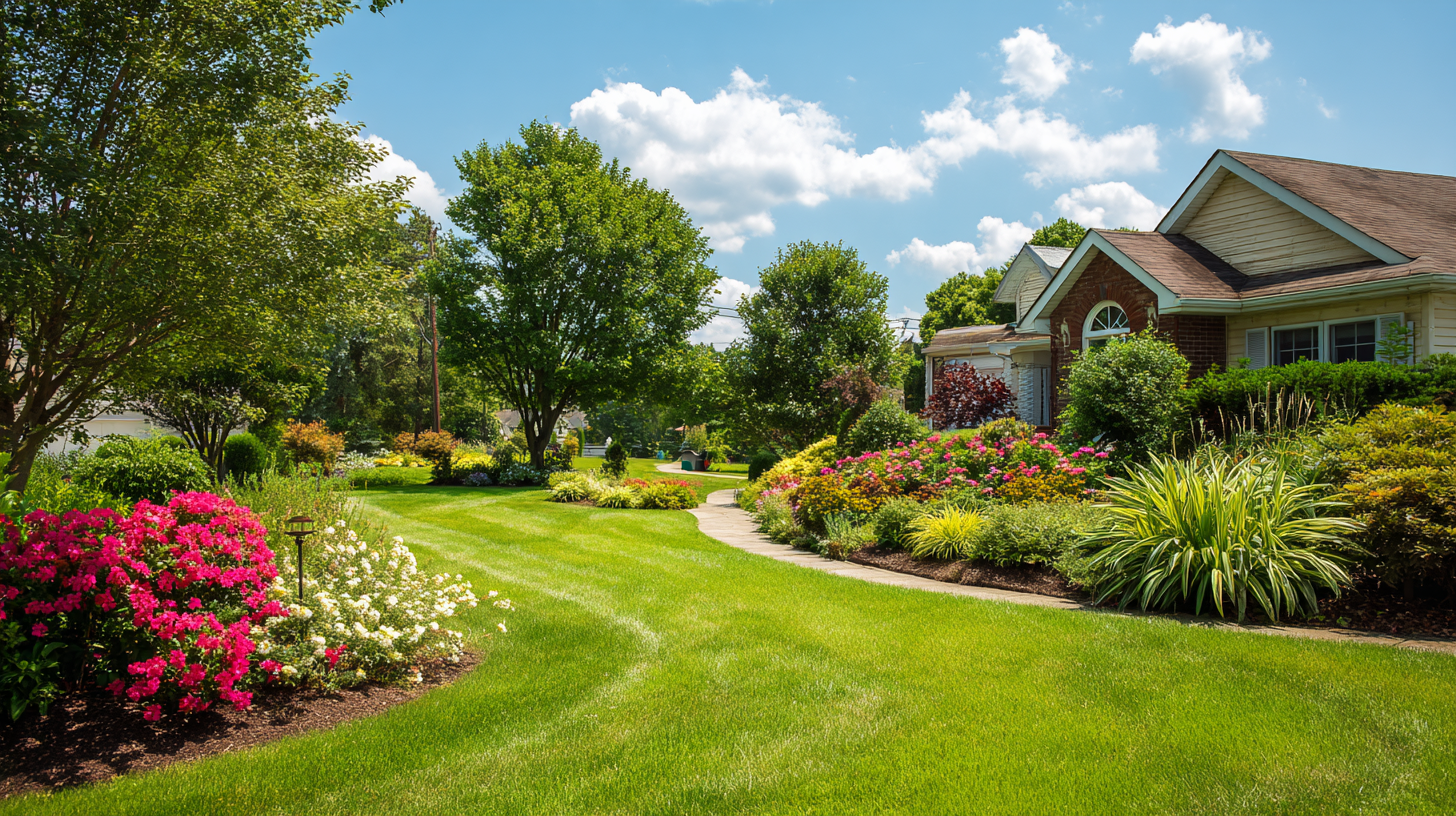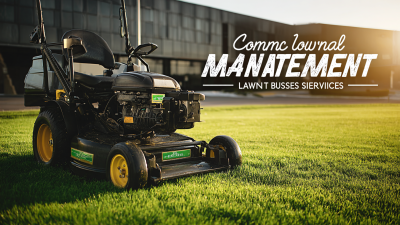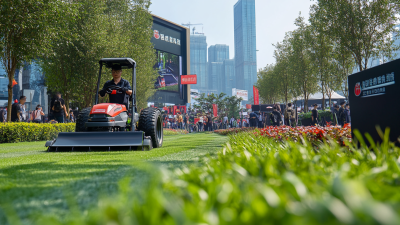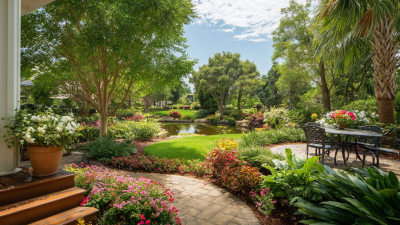Blog
Signature Lawn and Landscape LLC
How to Optimize Your Landscaping Lawn Maintenance for Maximum ROI: Insights and Best Practices
In today’s competitive real estate market, homeowners and property managers are increasingly recognizing the importance of investing in Landscaping Lawn Maintenance to enhance property value and curb appeal. According to a 2021 report by the National Association of Realtors, professional landscaping can yield a return on investment (ROI) of up to 100% or more when selling a home, making it one of the most effective upgrades for attracting potential buyers. Furthermore, a well-maintained lawn can reduce energy consumption by up to 25% by providing natural cooling and insulation, as reported by the US Environmental Protection Agency. As homeowners seek to optimize their landscaping efforts, understanding the best practices for ongoing lawn maintenance is crucial. This blog will delve into strategies and insights designed to maximize ROI while ensuring sustainable and beautiful landscapes.

Understanding the Importance of Lawn Maintenance for Maximizing Return on Investment
 Effective lawn maintenance is crucial for maximizing the return on investment (ROI) of your landscaping efforts. A well-maintained lawn not only enhances the aesthetic appeal of your property but also significantly increases its market value. The key to achieving this is to adopt a proactive approach to your lawn care practices, focusing on what brings the greatest benefits.
Effective lawn maintenance is crucial for maximizing the return on investment (ROI) of your landscaping efforts. A well-maintained lawn not only enhances the aesthetic appeal of your property but also significantly increases its market value. The key to achieving this is to adopt a proactive approach to your lawn care practices, focusing on what brings the greatest benefits.
Tip 1: Regular Fertilization and Watering - Ensuring your lawn receives the right nutrients and adequate hydration can dramatically improve growth and health. Implement a fertilization schedule based on soil testing results and adjust watering practices according to seasonal needs to keep your lawn lush and vibrant.
Tip 2: Strategic Landscaping Improvements - Focus on landscaping projects that have been shown to deliver high ROI, such as adding native plants or creating a multi-tiered garden. These investments not only enhance the beauty and functionality of your outdoor space but also are more sustainable and easier to maintain in the long run.
By understanding and implementing these key practices, you can make the most of your lawn maintenance efforts, turning your outdoor space into a valuable asset that positively impacts both your living environment and your investment returns.
Key Practices for Efficient Lawn Care: Time-Saving Techniques and Tools
Efficient lawn care is essential for maximizing your ROI in landscaping maintenance, and implementing time-saving techniques can drastically reduce your workload while enhancing your lawn's appearance. One effective strategy is to schedule regular maintenance tasks, such as mowing, fertilizing, and watering, based on weather and growth patterns specific to your region. By utilizing a calendar or digital reminders, you can streamline these processes, ensuring they are completed consistently without falling through the cracks amidst your busy schedule.

Investing in the right tools can also lead to significant time savings. For instance, a robotic mower can tackle routine mowing tasks autonomously, allowing you to redirect your efforts towards more complex landscaping projects. Additionally, a smart irrigation system can optimize watering schedules, adjusting to real-time weather conditions and thus conserving water while maintaining lush greenery. Pairing these tools with best practices, like mulching clippings and using organic fertilizers, will not only improve the health of your lawn but also enhance its aesthetic appeal, ensuring your landscape remains vibrant and inviting.
Choosing the Right Plants: Cost-Effective Selections for Your Landscape
When it comes to optimizing your landscaping for maximum return on investment (ROI), selecting the right plants is crucial. Cost-effective plant choices not only enhance the aesthetic appeal of your landscape but also minimize ongoing maintenance costs. Start by researching native plants that thrive in your local climate, as they typically require less water, fewer pesticides, and less fertilization than non-native species. Choosing native plants can lead to a stunning landscape that flourishes with minimal effort, showcasing the beauty of local flora while encouraging biodiversity.
In addition to native plants, consider incorporating perennials into your landscaping. Unlike annuals, which require replanting each year, perennials return and flourish season after season, reducing overall planting costs and labor. When planning your garden, opt for a mix of flowering plants and foliage to ensure year-round interest and resilience. Grouping plants with similar water and sunlight needs will also create a more sustainable landscape, further enhancing the ROI by reducing maintenance tasks like watering and pruning. By making informed plant selections, you can create a vibrant and cost-effective landscape that elevates your property value without demanding excessive time and resources.
How to Optimize Your Landscaping Lawn Maintenance for Maximum ROI: Insights and Best Practices - Choosing the Right Plants: Cost-Effective Selections for Your Landscape
| Plant Type | Initial Cost ($) | Maintenance Cost ($/year) | Lifespan (years) | ROI (%) |
|---|---|---|---|---|
| Native Grass | 150 | 25 | 10 | 80 |
| Perennial Flowers | 200 | 30 | 5 | 70 |
| Shrubs | 300 | 40 | 15 | 75 |
| Trees | 500 | 50 | 20 | 85 |
| Vegetable Garden | 100 | 15 | 3 | 90 |
Implementing Sustainable Practices to Enhance Lawn Longevity and Value
Implementing sustainable practices in your lawn maintenance is crucial for enhancing both the longevity and value of your landscaping. By adopting eco-friendly methods, such as using organic fertilizers and native plants, you can create a resilient ecosystem that thrives over time. Native plants require less water and are more resistant to local pests, reducing the need for chemical interventions. This not only conserves resources but also fosters a healthy environment for wildlife, contributing to biodiversity in your yard.
Another vital aspect of sustainable lawn care is efficient irrigation. Implementing a drip irrigation system or utilizing rain barrels can significantly minimize water waste while ensuring your lawn receives adequate moisture. Furthermore, regular mowing at the correct height and maintaining sharp blades can promote healthy growth and reduce disease, leading to a lush and vibrant lawn. By prioritizing these sustainable practices, you will not only enhance the aesthetic appeal of your property but also maximize your return on investment, making your lawn a valuable asset for years to come.
Measuring ROI: How to Evaluate the Financial Impact of Your Landscaping Efforts
Measuring the ROI of your landscaping efforts requires a meticulous approach that takes into account both qualitative and quantitative factors. According to the National Association of Realtors, well-landscaped homes can recover around 100% of their landscaping investment, significantly enhancing property value. This statistic emphasizes the financial benefits of investing in landscaping not only as a maintenance effort but as a strategic asset.
To accurately evaluate your landscaping ROI, keep detailed records of expenses and improvements. This can include everything from initial design costs to ongoing maintenance fees. A report by the American Society of Landscape Architects indicates that regular maintenance adds about 15% to the expected lifespan of landscaping features, representing long-term savings and increased property value.
Tips: Regularly assess your property to identify areas that require attention or updates. Use a standardized rating system to gauge the effectiveness of different landscaping features over time. Engaging with a professional landscaping service can also provide insights into sustainable practices that reduce costs while maximizing aesthetic appeal.
Related Posts
-

How to Choose the Best Commercial Lawn Maintenance Services for Your Business
-

Boost Your Professional Yard Maintenance Business with Insights from the 137th Canton Fair
-

Top Strategies for Achieving Optimal Lawn Care Results
-

12 Must Have Tools for Effective Yard and Lawn Maintenance
-

What You Need to Know About Home Yard Maintenance: A Comprehensive Guide
-

Elevate Your Outdoor Spaces with China's Premier Residential Yard Maintenance Solutions


Share On: